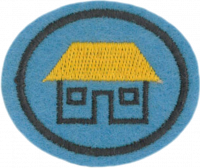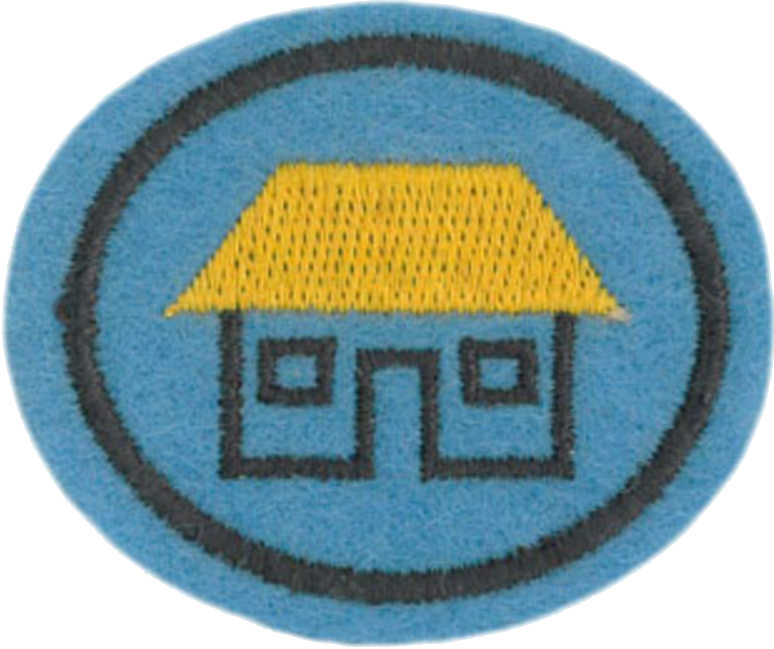Difference between revisions of "AY Honors/Thatching/Answer Key/es"
(Created page with "</noinclude> <!-- 2. Decir qué materiales se necesitan para levantar la estructura de un techo listo para colocarle la paja. Decir brevemente cómo se va construyendo la estr...") |
(Created page with "</noinclude>") |
||
| Line 18: | Line 18: | ||
{{CloseReq}} <!-- 3 --> | {{CloseReq}} <!-- 3 --> | ||
{{ansreq|page={{#titleparts:{{PAGENAME}}|2|1}}|num=4}} | {{ansreq|page={{#titleparts:{{PAGENAME}}|2|1}}|num=4}} | ||
| − | <noinclude> | + | <noinclude></noinclude> |
| − | </noinclude> | + | <!-- 4. Responder las siguientes preguntas sobre la preparación del material del techado con paja: --> |
| − | <!-- 4. | + | <noinclude></noinclude> |
| − | <noinclude | ||
| − | |||
{{ansreq|page={{#titleparts:{{PAGENAME}}|2|1}}|num=4a}} | {{ansreq|page={{#titleparts:{{PAGENAME}}|2|1}}|num=4a}} | ||
| − | <noinclude> | + | <noinclude></noinclude> |
| − | </noinclude | ||
| − | |||
| − | |||
| − | + | {{clear}} | |
| − | |||
| − | |||
| − | + | <noinclude></noinclude> | |
| − | <noinclude | ||
| − | |||
{{CloseReq}} <!-- 4a --> | {{CloseReq}} <!-- 4a --> | ||
{{ansreq|page={{#titleparts:{{PAGENAME}}|2|1}}|num=4b}} <!--T:5--> | {{ansreq|page={{#titleparts:{{PAGENAME}}|2|1}}|num=4b}} <!--T:5--> | ||
| − | <noinclude> | + | <noinclude></noinclude> |
| − | </noinclude | ||
| − | |||
| − | |||
| − | + | <noinclude></noinclude> | |
| − | <noinclude | ||
| − | |||
{{CloseReq}} <!-- 4b --> | {{CloseReq}} <!-- 4b --> | ||
{{ansreq|page={{#titleparts:{{PAGENAME}}|2|1}}|num=4c}} <!--T:6--> | {{ansreq|page={{#titleparts:{{PAGENAME}}|2|1}}|num=4c}} <!--T:6--> | ||
| − | <noinclude> | + | <noinclude></noinclude> |
| − | </noinclude> | + | <noinclude></noinclude> |
| − | <noinclude | ||
| − | |||
{{CloseReq}} <!-- 4c --> | {{CloseReq}} <!-- 4c --> | ||
{{CloseReq}} <!-- 4 --> | {{CloseReq}} <!-- 4 --> | ||
{{ansreq|page={{#titleparts:{{PAGENAME}}|2|1}}|num=5}} | {{ansreq|page={{#titleparts:{{PAGENAME}}|2|1}}|num=5}} | ||
| − | <noinclude> | + | <noinclude></noinclude> |
| − | </noinclude> | + | <!-- 5. Contestar las siguientesː --> |
| − | <!-- 5. | + | <noinclude></noinclude> |
| − | <noinclude | ||
| − | |||
{{ansreq|page={{#titleparts:{{PAGENAME}}|2|1}}|num=5a}} | {{ansreq|page={{#titleparts:{{PAGENAME}}|2|1}}|num=5a}} | ||
<noinclude><div lang="en" dir="ltr" class="mw-content-ltr"> | <noinclude><div lang="en" dir="ltr" class="mw-content-ltr"> | ||
Revision as of 23:43, 10 May 2021
Nivel de destreza
2
Año
Desconocido
Version
19.04.2024
Autoridad de aprobación
Asociación General
1
2
3
4
4a
4b
4c
5
5a
No. A roof needs to have a pitch of at least 45° or steeper, or it is not suited to thatching. Thatched roofs should be as simple as possible, though complex roofs are frequently thatched. Dormers, multiple ridges, and valleys should be avoided, though they can be accommodated.
5b
A conical roof is easiest to thatch because the thatcher simply starts at the bottom and goes around until he has circled the entire structure. Then the next layer is added. With a conical roof, there are no tricky corners or transitions to worry about except at the peak which is a single point.
5c
Thatched roofs use native materials which avoids the cost and expense of manufacture and transport. Thatch is also a cheap and usually abundant building material which blends well with the house's surrounding environment.
Thatched roofs are not uncommon among luxury homes (especially in the U.K.) because of the aesthetic charm. A well-thatched roof which is well cared for can be expected have a lifespan exceeding 50 years. By comparison, asphalt shingled roofs have an expected lifespan of only 20 to 30 years.
5d
Fire
The greatest disadvantage of thatch is that when it catches on fire, it is extremely difficult to extinguish. Thatch roofs do not catch on fire any more frequently than other types of combustible roofs, but when they do ignite, damage is extensive. Some insurance companies will not insure a building with a thatched roof because of this, and also because skilled thatchers are sometimes very expensive to hire.
Fire can be abated by treating thatch with a fire retardant. A law was passed in London, England in 1212 requiring all existing thatched roofs to be whitewashed with plaster daub.
The construction of the thatched roof also plays a key role in its susceptibility to fire. Thatch should be densely packed, between 35 to 50 kg/m2, and at least 175 mm thick.
Wire should not be used in the construction of a thatched building, as it is a conductor of lightning. Rather, natural materials should be used to bind the thatch, such as sisal twine.
The building should also be equipped with proper lightning protection.
No wiring should enter the building through the thatch (including electrical, telephone, cable TV, etc.). Rather, it should enter either underground through a conduit, or through a non-thatched wall. Antennas should never be mounted on a thatched roof.
The roof should be regularly groomed so that loose straws (which are easily ignited) are removed.
Decay
Thatch is obviously an organic material, and as such, it is susceptible to decay. To protect against this, the thatch should not be harvested until after the first frost has ended its growing season. After it is harvested, it should be stored off the ground and under cover. Leaves should not be allowed to accumulate on the roof of a thatched building, and the roof should be steep - at least 45° - to facilitate the rapid runoff of water. The growth of vegetation on a thatched roof inhibits runoff, so it should be removed quickly if it takes hold.
Vermin
Thatch may be attacked by all manner of vermin, though their numbers are usually held quite low. Any number of poisons can be sprayed on the thatch to eliminate this problem.
6
7
7a
A rondavel is usually thatched by a team of four people.
The first worker passes the bundles of thatch up to the workers on the roof. Before doing this, he will butt the end of the bundle on a flat surface. This blunts the ends of the straws and lines them up.
Two more people work on top of the roof, and a fourth person works from the inside.
7b
7c


